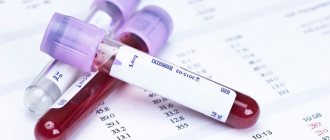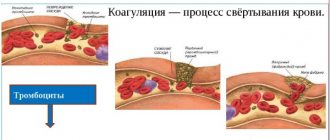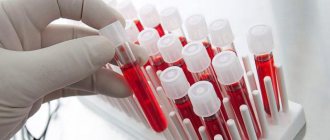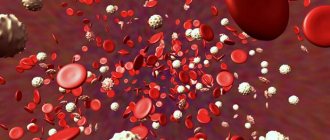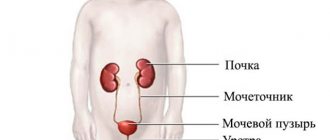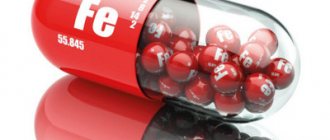The diagnosis and treatment of various pathologies of the human body has been steadily moving forward over the years. Modern research methods make it possible to miraculously confirm a particular disease. But in situations when it comes to the liver, there is, unfortunately, no universal method that will allow you to assess the level of its fermentation and condition. Therefore, laboratory diagnostics include liver function tests. Thanks to this study, it is possible to learn about the condition of the liver and the degree of development of the suspected disease.
General information
Liver tests are a clinical blood test that helps assess the degree of damage and the nature of the disease in the hepatobiliary system. The assessment is influenced by the concentration of components in the blood sample being tested. The analysis complex includes the following indicators:
- ALT, AST, GGT, alkaline phosphatase;
- albumen;
- bilirubin.
All results that go beyond the normal range indicate liver damage and the development of pathology in it.
The liver is a vital organ that is responsible for many continuously occurring biochemical processes. It produces components of the complement system and immunoglobulin. These elements are extremely important for the immune system, as they help the body fight external pathogens. In addition, the liver performs the biotransformation of bilirubin and synthesizes glycogen.
- Using a biochemical blood test, for example, in case of liver cirrhosis, it is impossible to find out about the activity of processes occurring in the organ, since liver cells are separated from the circulatory system by hepatocytes.
- But if liver enzymes are detected in a clinical analysis, it is said that the walls of the hepatocytes are damaged and the organ requires immediate treatment.
It is worth understanding that if any deviations from the norm are detected in the biochemical analysis of the liver, regardless of whether the indicators are increased or decreased, they indicate a lack of its synthetic function.
Interesting! Diagnosis of various pathologies, where a blood test for liver tests is used, interpretation is carried out in parallel with the conduct of kidney and rheumatic tests.
Important components
Sediment samples are used to assess the level and magnitude of protein. Used for various lesions, cirrhosis, cancer.
Liver tests provide a series of data:
- Alanine aminotransferase (ALT).
- Aaspartate aminotransferase (AST).
- Gamma glutamyl transferase (GGT).
- Alkaline phosphatase (ALP).
- Bilirubin.
- General protein.
- Albumen.
If the data is elevated, two types of globulin are increased. The albumin level is reduced. The interpretation of the analysis means inflammation of the liver. Fatty, heavy food eaten the day before donating blood affects the result. It becomes unreliable if there is pathology, disorders and kidney diseases.
The atherogenicity coefficient confirms the development of atherosclerosis. Spruce increased triglycerides - fatty load on the liver. Samples increase during pregnancy. Biochemistry may contain serum iron. At elevated levels, simultaneously with an increase in ASAT and ALAT, they show a violation of cell structure. If there is an excessive increase in the amount of iron in the body, without an increase in ALAT and AST, serum iron will be increased.
Liver tests for the presence of copper are taken to diagnose a hereditary disease called Wilson-Konovalov disease. In case of organ cancer, lesions of a slightly different nature, metastases, the value of cholinesterase in the serum decreases. The table of indicators can characterize what the norm should be for men and women. The same numbers of bilirubin, total protein and albumin.
| Enzyme | Men (Before) | Women (Before) |
| AST | 46 | 33 |
| ALT | 36 | 32 |
| GGT | 48 | 32 |
| Total bilirubin | 8,6 – 20,6 | |
| Direct bilirubin | 15,3 | |
| Bilirubin indirect | 4,5 | |
| Total protein | 60 – 70 | |
| Albumen | 40-50% | |
The actual and standard data are compared to check for deviations. Liver disease and dysfunction are considered the main reason for changes in all samples. Doctors focus on frequent deviations from standards. The appearance of enzymes in the blood indicates that the integrity of cell membranes is compromised. An increase and decrease in numbers indicates pathologies and other negative processes occurring in the liver.
Indications for the study
Functional liver tests are indicated to determine various pathologies of the organ. These include:
- the appearance of yellowness of the sclera and skin areas;
- pain or a feeling of heaviness in the right hypochondrium;
- bitterness in the mouth in the morning;
- attacks of nausea;
- temperature increase;
- alcoholism;
- chronic organ diseases;
- diabetes;
- overweight;
- suspicion of cirrhosis or one of the types of hepatitis (viral, autoimmune, drug-induced, etc.);
- pathologies of the thyroid gland;
- changes in the liver according to preliminary ultrasound images;
- recent transfusion of blood or its components;
- high iron levels;
- elevated gammaglobulin levels.
We recommend: What is the significance of ionized calcium
Such liver tests make it possible to assess the course of the disease over time, and not only the liver itself is assessed, but also the entire hepatobiliary system.
Interesting! Liver function tests can also diagnose some parasitic diseases.
It is also worth mentioning that this blood test for liver disease makes it possible to identify drug-induced damage to the organ, since some drugs can damage liver cells.
Albumen
This indicator allows you to assess the ability of the liver to synthesize proteins. Decreased albumin levels mean that the liver is unable to properly process amino acids from food. Albumin, as one of the proteins synthesized by the liver, performs two important functions:
- retains fluid in the vascular cavity and thereby maintains normal oncotic pressure in the bloodstream;
- transports various compounds (electrolytes, drugs, nutrients) and distributes them throughout the tissues of the body.
The normal level of albumin for adults is from 36 to 56 g/l. But its concentration may decrease. This may be related:
- with fasting;
- with loss of protein through the renal tubules in pathology of the urinary organs;
- with impaired synthesis in the liver due to damage to hepatocytes.
How to prepare for analysis
Liver test analysis proceeds as follows:
- It is necessary to avoid eating for 12 hours before the start of the study. As a rule, blood sampling occurs in the morning before 11 o’clock, so you cannot have breakfast after a night’s sleep. You are allowed to drink a few sips of water.
- Avoid any physical activity or emotional stress as much as possible half an hour before the test.
- Smoking is prohibited 30 minutes before the start of the test.
The material being studied is venous blood.
What do the results of liver tests say? Norms and deviations
Liver function testing of the liver shows an assessment of its three main functions:
- synthetic;
- exchange;
- excretory.
Based on the results of the study, it will be revealed which of the indicators are violated and which functions the organ does not perform sufficiently.
Synthetic function
The synthetic function includes indicators:
- albumin;
- prothrombin;
- cholesterol.
Albumin is the main blood protein that transports and maintains oncotic pressure. In fulminant hepatitis and severe renal failure, the albumin concentration is greatly reduced. In alcoholic hepatitis and hepatitis C, blood tests for albumin in liver tests are within normal limits and occasionally decrease.
Prothrombin time allows you to evaluate the external coagulation pathway of fibrinogen, prothrombin, factors V, VII and X. Since it is the liver that synthesizes these substances, a deviation from the norm may indicate a violation of the coagulation mechanism, which ultimately leads to increased bleeding. Unfortunately, in the early stages of pathology it is impossible to see significant deviations from the norm in this indicator.
We recommend: Diagnostic value of PSA analysis
Cholesterol is a substance that is produced 25% by the liver, after which it enters the blood or gastrointestinal tract, being part of bile acids. If cholesterol levels are greatly elevated, hypercholesterolemia is noted, which indicates the development of cholelithiasis, viral hepatitis, primary biliary cirrhosis and other pathologies. The normal level of total cholesterol is 2.9-5.2 mmol/l.
Exchange function
The exchange function includes indicators:
- ALT and AST;
- alkaline phosphate;
- GGT.
ALT and AST are enzymatic substances that are involved in the metabolism of amino acids. They can be found not only in the liver, but also in the heart and kidneys. Carrying out liver tests with further interpretation of the analysis and identifying deviations from the norm in ALT levels indicates diseases of the organ. ALT level is a specific marker of liver disease, since an increase in this indicator in a biochemical blood test indicates alcoholic hepatitis, metastases in the organ and cirrhosis of the liver. With viral hepatitis and toxic organ damage, ALT and AST increase.
ALP is a liver enzyme that acts as the main catalyst. An increase in its level in the blood indicates cholestasis. But in addition to liver pathologies, high alkaline phosphatase levels indicate bone diseases, sarcoidosis, and heart attack.
GGT is an important indicator, thanks to which it is possible to find out with 100% accuracy whether there are any pathological changes in the liver. GGT levels always increase if changes occur in the liver. When it comes to biliary obstruction, GGT levels increase 5-30 times.
Excretory function
Excretory function includes indicators of direct and indirect (total) bilirubin.
Bilirubin is a pigment that appears as a result of the breakdown of hemoglobin and certain heme-containing proteins. Bilirubin is toxic to the nervous system, so it is normally excreted in bile and urine from the body. The process of removing pigment is multi-stage, and the liver plays a major role in this. If the level of bilirubin in the blood is elevated, jaundice occurs.
We recommend: What does elevated parathyroid hormone mean in a blood test?
Treatment of pathology
Poor values during liver tests are an indication for the necessary therapy. First of all, it is recommended to eliminate the causes of increased bilirubin. To do this, detoxify the body, reduce the destruction of hepatocytes by taking hepatoprotective drugs and remove stones or accumulation of parasites in the bile ducts. They disrupt the flow of bile from the organ, which is performed through surgery. It is necessary to use drugs that reduce the load on the organ, such as sorbents, and drink plenty of fluids. With low protein, treatment consists of normalizing the diet, which should be rich in proteins.
What are the features of conducting a biochemical study?
It is recommended to carry out a blood test for liver tests on an empty stomach; in the morning you are only allowed to drink a few sips of water. In addition, before undergoing the study, you need to take care to exclude all kinds of factors that contribute to the appearance of a false result:
- taking antibiotics, antidepressants, hormonal contraceptives;
- Do not take Aspirin or paracetamol containing drugs, Phenytoin and barbiturates before the study.
Effect of drugs on liver tests
Many medications can cause liver damage and changes in liver enzyme activity.
- Antibiotics (especially anti-tuberculosis drugs).
- Paracetamol.
- Aspirin.
- Antidepressants.
- Barbiturates.
- Phenytoin.
- Oral contraceptives.
- Cytotoxic drugs (chemotherapy).
- and many others.
Before donating blood for liver tests, a patient who regularly takes medications (for diabetes, hypertension, hormone replacement therapy, etc.) must inform the laboratory doctor about this.
Liver function tests are diagnostic screening tests designed to detect signs of
pathologies of the liver and biliary tract. These tests alone are not enough to make a definitive diagnosis.
Are your liver test results different from normal? To find out the cause, contact a DOCTOR - he will prescribe an individual additional examination, clarify the diagnosis, and choose treatment.
I work in a kindergarten, often suffer from ARVI with complications, suffered pneumonia in the fall of 2020 and have the debut of bronchial asthma. I have been taking formisonide native, since 28.05 there is increased bilirubin in the urine, I took biochemistry tests. Total billirubin is 9.0, bound bilirubin is 3.0, glucose is 5.6, iron is 4.7*, alanine aminotransferase is 75.0*, aspartate aminotransferase is 47.0*. Sent to an infectious disease specialist, they said it was not our patient. What measures to take next? The pulmonologist noted that this is not related to taking a hormonal drug. What should I do next. I am currently on my third day of taking Suprax, diagnosed with acute tonsillitis.
The Ask a Doctor service offers an online consultation with a hepatologist on any problem that concerns you. Expert doctors provide consultations around the clock and free of charge. Ask your question and get an answer immediately!
Which doctor should you contact?
If the question arises about what test needs to be taken if there are problems with the liver, and which specialist to go to for help, here we can recommend contacting:
- therapist;
- gastroenterologist;
- hepatologist;
- general practitioner
All these specialists must examine the patient and prescribe diagnostic tests to confirm the diagnosis.
A liver blood test shows the condition of the liver and allows you to identify many pathological conditions that are in a latent form and do not manifest themselves at an early stage. If you identify the problem in time, getting rid of the disease will be much easier and faster.
Alanine aminotransferase (ALT)
A liver enzyme, like AST, involved in metabolism and in particular amino acids. Just like AST, it is predominantly present in liver cells, muscle and cardiac tissues. Its content in women normally varies from 10 to 30 U/l. In men, the norm is 10-40 U/l. Its excess also signals damage to tissues that contain alanine aminotransferase. If the AST and ALT levels are elevated, this may indicate the presence of diseases such as viral hepatitis, acute alcohol or food poisoning, liver cirrhosis, and the presence of parasites.
